LP: When I read the article from American Artist magazine, 1967, you described your process as not really involving much in the way of pencil sketches. But rather, that you would do small, 8" x 10" painted sketches on gessoed masonite.
(Below, two painted sketches by Joe Bowler - studies for different magazine illustrations - 1960s)
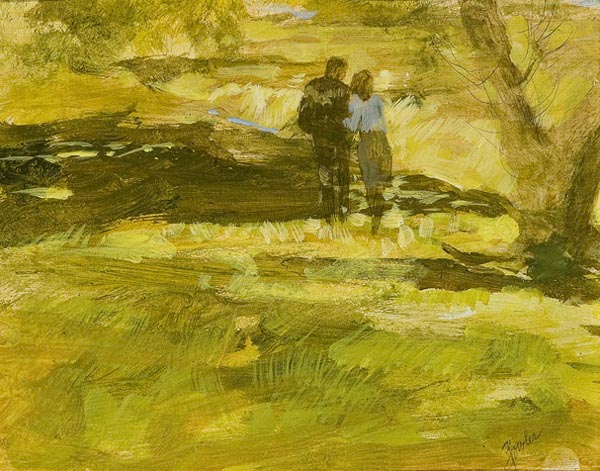
JB: Yeah.
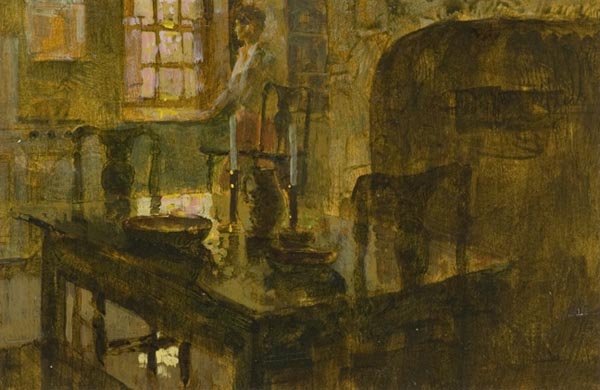
LP: Was that typical in the '50s as well? Or would you do a longer pencil sketch stage or a thumbnail stage before going to the paint?
JB: I changed it a little... but I would usually start with a fairly involved pencil to start with on most of the illustrations I did.
LP: I assume you'd shoot photo reference for starters...
JB: Yeah. Oh yeah. Always. But once I started doing painted sketches, I ended up drawing less and sort of 'drawing' with my paint brush. In fact, when Murray Tinkelman got me to start teaching at Parsons, that's how I would begin my demonstrations. I would just get the model up there and begin to paint... maybe do a little raw sienna outlining to sort of establish where she was going to sit on the canvas, and then go in immediately with colour and paint - big areas - like you're supposed to do.
(Below, McCall's illustration 'sketch' and final, 1960s)
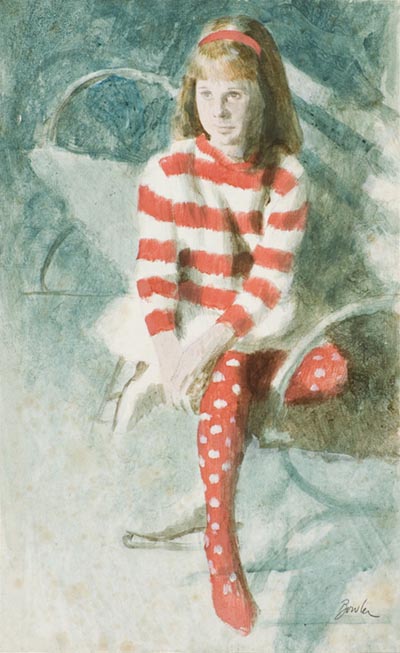
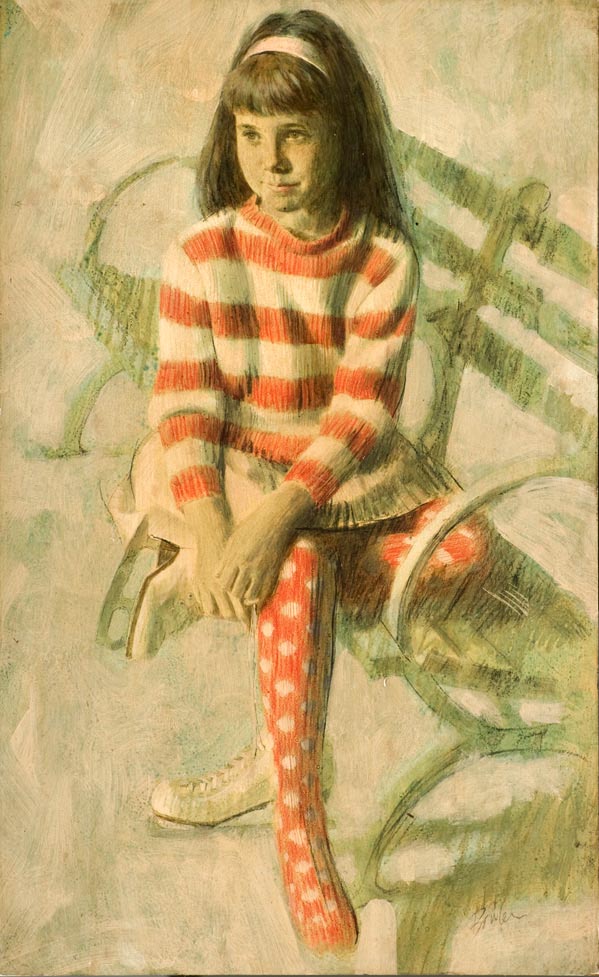
LP: So you're essentially blocking in shapes and values right from the get-go.
JB: Yeah. (emphatically) I never draw anything anymore. All done with paint. And boy, is it fun. It's like making mistakes and correcting them, that's what [Thomas] Eakins used to say. And that's what I do; I just keep throwing the stuff on, scraping it off, refining it and refining it, and that's how it grows.

Over a period of time you start to see something really working.

LP: Let's talk about back in the '50s... I've got this scan from one of your crime fiction pieces from Collier's. This would be from around 1954...

On the Heritage Auctions website, I found a great scan of the original art of that piece...

... I mean you can literally see every brush stroke.
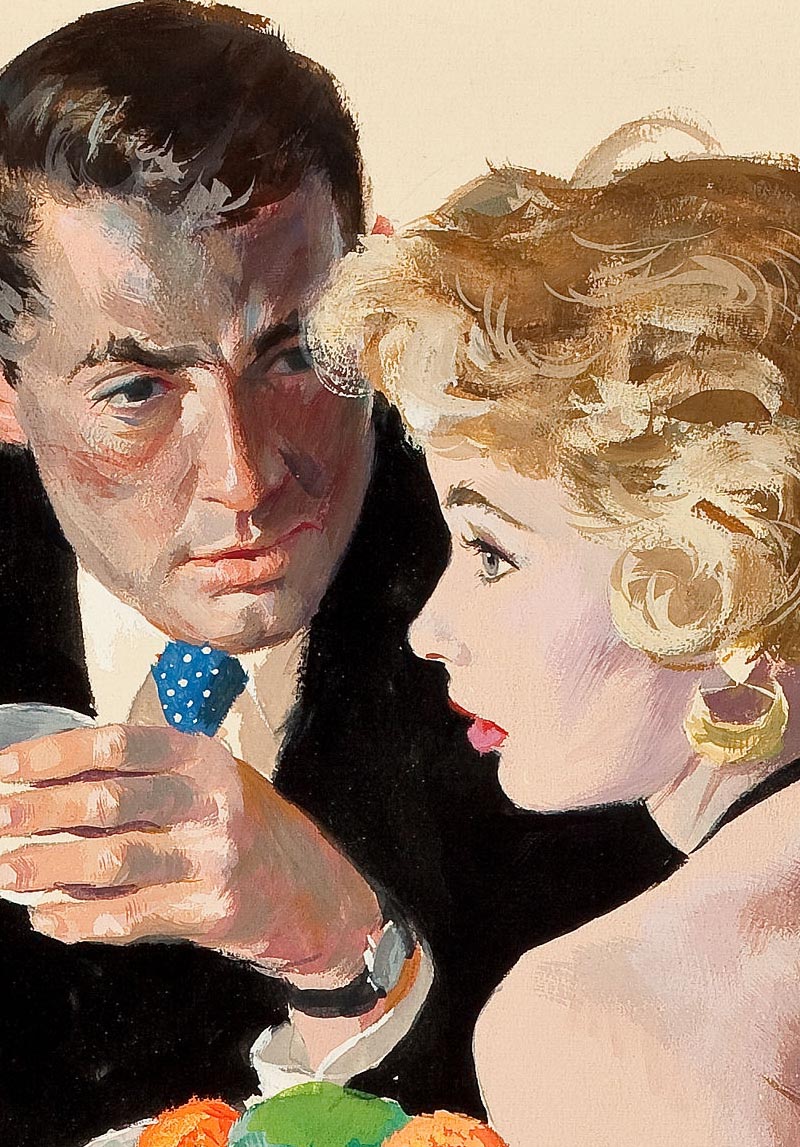
LP: I guess - am I correct to assume - that at this point you were working in gouache?
JB: Gouache, yeah. Designer's Colours.
LP: Ok. And it's fairly evident looking at this piece that you weren't really mixing and blending the paint so much as laying down one colour over another, using the opacity of the gouache. Was that something that came very easily to you or was that a technique you learned at Cooper's?
JB: I think it was something I learned at Cooper's, watching Coby, mainly.
LP: When you consider how you work today in oils and the way you worked back then in gouache; is there a relationship between the two ways, do you think?
JB: In a way there is, except I used to do a lot of drawing in those days. And that whole business of being afraid to lose your drawing because you'll never get it back? Once I got over that - that's when I really started to have fun.
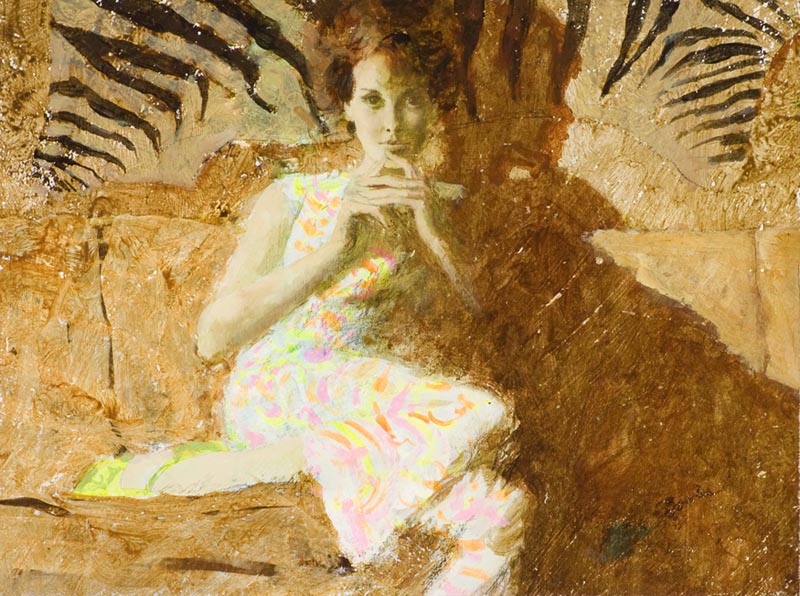
JB: You can always get the drawing back. And mainly reading about how Sargent painted and Sorolla and Zorn - all of these guys had a lot written about how they approach painting and that's where I get a lot of the stuff... and then I have to do it... and then I say, "Oohhh, that's how they did it."
LP: From reading about the Cooper studio and especially from talking with Murray Tinkelman, there came a point in the mid-to-late '50s where he introduced you guys to a painter named Reuben Tam.
(Below, "The Weathering of Kauai" By Reuben Tam, year unknown)

I know that, subsequently, a bunch of guys from Cooper's started going to Tam's painting classes... were you among that group? Was Tam an influence on you as well?
JB: Well I had gotten polio in the fall of 1958, and when I was able to come back on crutches and everything I couldn't really sign up for it. It killed me because Bill Whittingham and Coby and all these guys were signing up for this class because of Murray. Of course [Bernie] D'Andrea had been there for a while, studying with Tam. But I did go to the critiques. Once a month he'd have a big critique. And I'd go over and listen in on a couple of hours of the most incredible critiques of about sixty paintings. The guy was a master.
("Ominous Reef" by Reuben Tam, year unknown)
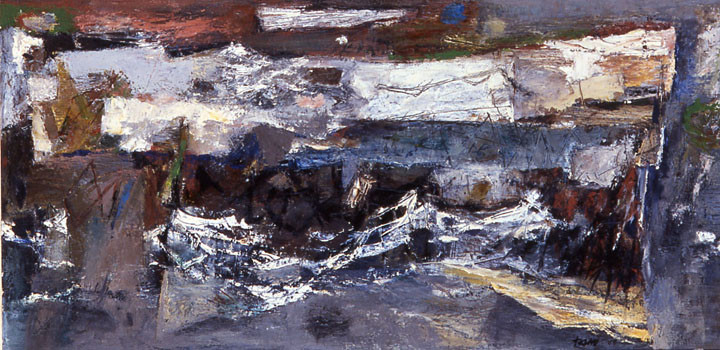
LP: So you didn't actually get to paint in Reuben Tam's class but you at least got some influence from listening in on the critiques.
JB: I sure did. Yeah.
LP: That's interesting because when I look at your work from around 1960/'61 I can see a change... a stylistic change, a technique change... maybe that was the influence of Reuben Tam?
(Below, Joe Bowler illustration for Redbook, September 1961)
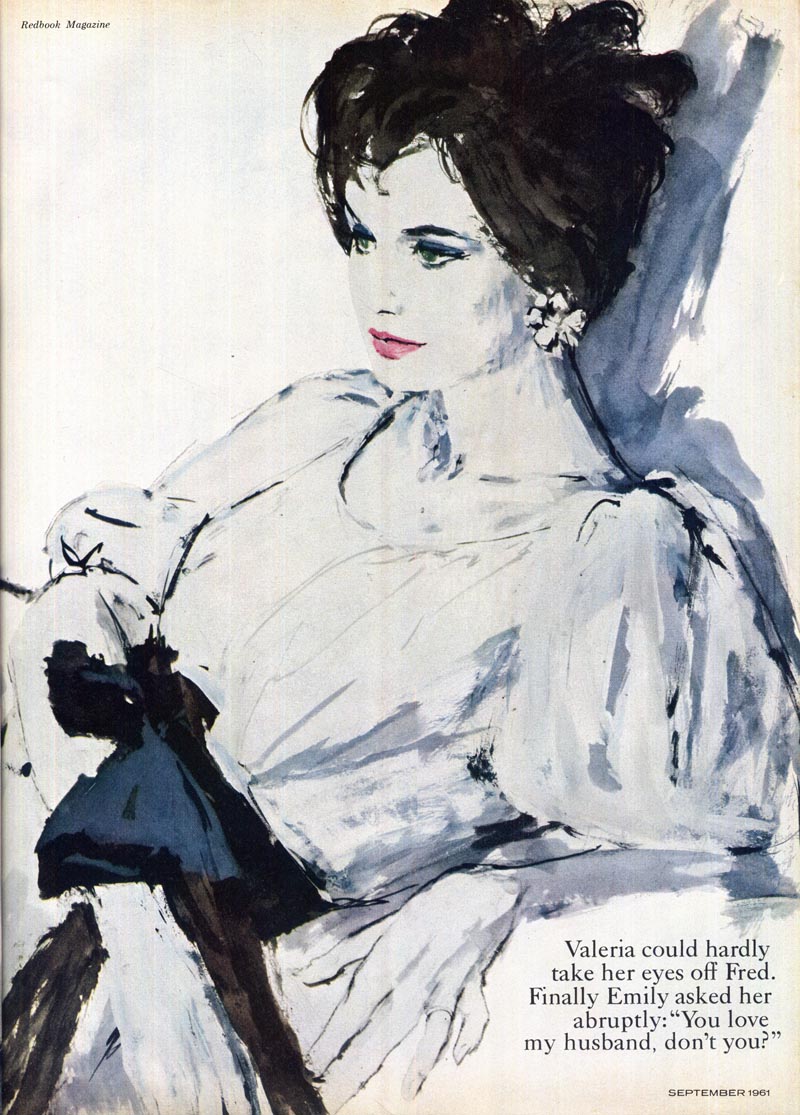
JB: Well, Tam, yes, plus Murray dragging me to every show of abstract expressionists that he could get me to.
LP: Really?
JB: Yeah. Murray was bound and determined to teach me about that group. And of course that was a time when all of them - Pollock and Kline and DeKoenig and all the major guys, plus the second rung, would have these shows that we would go to. And Murray would explain these things to me... so in the end I was influenced a lot by that. Not that you'd ever see me going that way (chuckles) but there was really a tremendous amount of stuff going on at that time that influenced me.
(Below, Joe Bowler illustration for Redbook, April 1961)

LP: Before Murray started explaining it to you, I'm sure you must have seen articles in magazines or the arts section of the paper about it. Initially did you think, "This stuff looks like a bunch of baloney."?
JB: Well, yeah, totally, because I didn't understand a thing about it. And Murray was doing stuff at the time. He was with Tam (and he wasn't making any money at Cooper's) so he'd bring these paintings in when he'd get 'em done - these great big 5'x5' abstract expressionist paintings - and auction them off.
(Below, 'Me' by William Saroyan, illustrated by Murray Tinkelman, 1970)
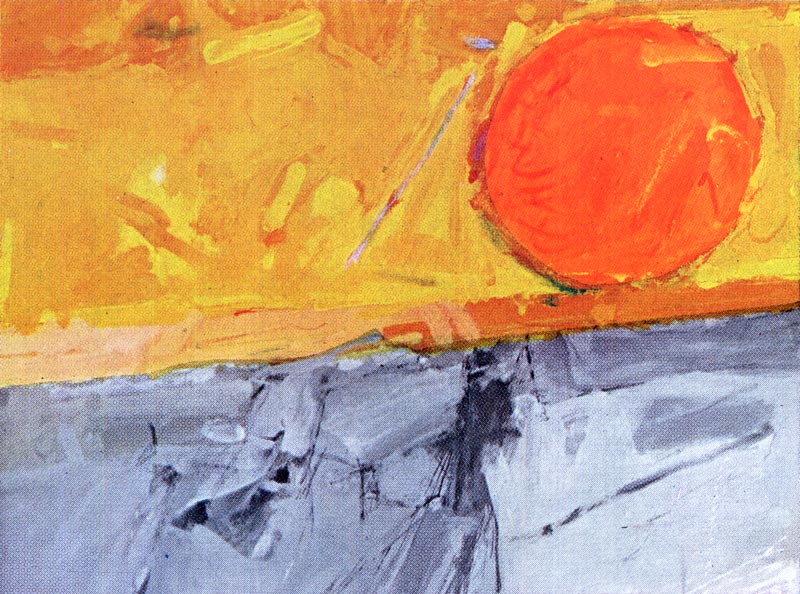
LP: No kidding?
JB: Yeah. And sometimes he'd get fifteen bucks (we both chuckle) for one of these beautiful big things. In fact I got one and I had it for years! Until the paint started to flake off. (Joe chuckles) A lot of these guys, they didn't really care about the quality of the paint they were using. They were using house paint and dime store enamels... but that didn't matter - it was the moment, you know - you had to do it 'in the moment'.
That's why it's amazing; you know, Bernie D'Andrea, he's got a huge amount of big abstract paintings that he did. Semi-abstract, figurative abstract expressionist..."
LP: I've actually got a few issues of Boy's Life that have Bernie D'Andrea illustrations in them that are pretty much abstract expressionist paintings.
(Below, Bernie D'Andrea illustration for Boy's Life, May 1965)

JB: Bernie just had a show last year at the museum in Savannah of about twenty of these huge abstract paintings and they're in beautiful condition. He used nothing but the best materials.
Continued tomorrow
* To see recent works by the artist, visit Joe Bowler's website
* Thanks to Heritage Auctions for allowing me to use a scan from their image archives in today's post.









Post a Comment